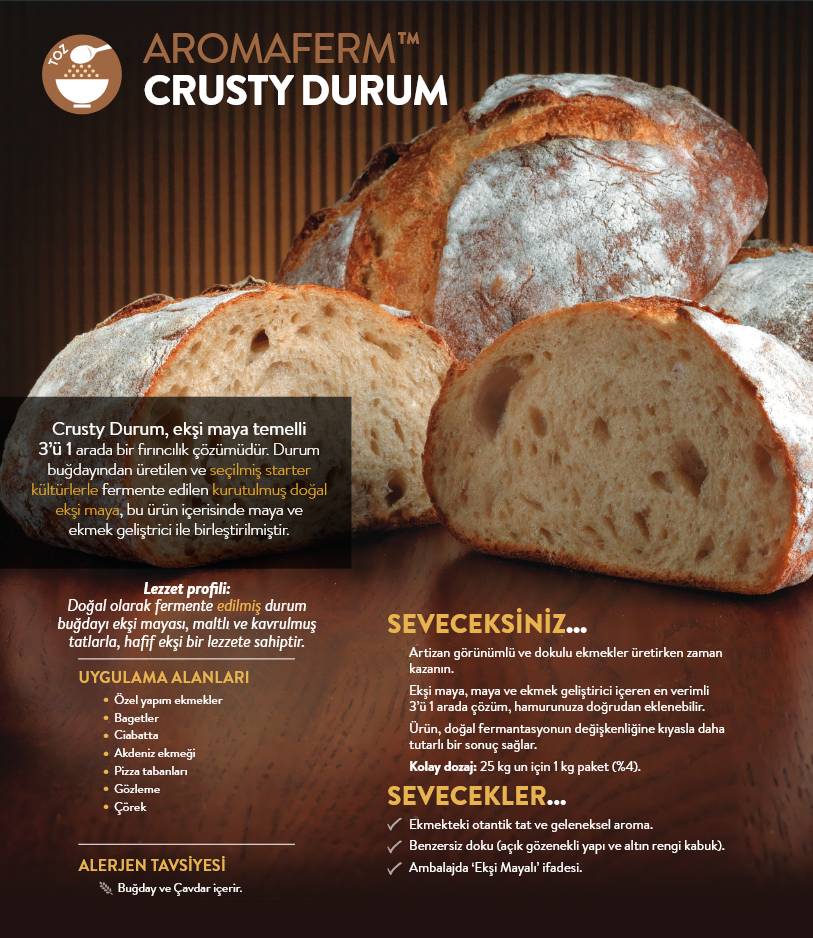History of Yeast
Yeast was known in pre-historic times. Sources indicate that the history of bread goes back to 8000BC and the history of yeast to 3500BC. Archaeological excavations identified that yeast was used before 2000BC in Babylonia and ancient Egypt.
Ancient peoples were interested in yeast as it rapidly consumes sugar and produces CO2 (carbon dioxide) and causes the leavening of bread. During bread making in early times, dough was kept in a natural environment so that natural wild yeast stemming both from grains and the environment led to leavening, although slowly.
The most reproduced microorganism in the world is yeast. Yeast is used in the production of enzyme vitamins, hormones, vaccines, insulin, alcohol, fuel oil and dispersive industrial goods, drugs and cosmetic products, flavour enhancers, dietary food (zinc and iron-rich) and probiotic products.
About Yeast
Among all living things, yeast belongs to the genus of Saccharomyces and species of Cerevisiae.
This family is divided into several cultures:
- Saccharo = Sugar
- Myces = Fungi
- Cerevisiae = Beer in Latin
Yeast is a single-celled microscopic organism; it is acquired after purification of the “Saccharomyces Cerevisiae” culture. Yeast cells are curved or oval. Their dimensions vary between 2-3 μm (micron) and 20-50 μm. A Gram of yeast approximately consists of 10 billion cells.

Yeast and Baking Powder
Some users still cannot distinguish between yeast and baking powder. Nevertheless, only yeast can provide bread’s idiosyncratic lightness, cellular inner structure, taste and flavour.
What is baking powder?
It is a chemical material which reacts in the oven during cooking.
What is yeast?
Yeast is a living organism. Unlike baking powder, it feeds, lives, breathes and multiplies.

Yeast Production
The pure breed of saccharomyces cerevisiae is used as bread yeast.
1. Pure culture:
Pure yeast cultures are produced in AB Mauri Research and Development Centre, in Sydney, North Ryde, Australia. Fresh cultures are regularly distributed to AB Mauri’s factories worldwide to be produced as bread yeast. A small amount of this pure culture might be used to produce tons of bread yeast in a couple of days.
The sugar needed for the growth of yeast cells is acquired from molasses. Molasses is exposed to cleaning process. It is finally sterilised with steam. Sterilised molasses syrup is stored in stainless steel storage. Pure culture is firstly reproduced in laboratory conditions.
2. Germinal yeast production:
Pure culture is vaccinated to a germinal fermenter, which includes other nutritive material alongside sterilised molasses syrup. The Pure culture is transferred to a main fermenter after it is converted into the optimum yeast cell. The growth of a pure culture in the main fermenter later becomes germinal yeast.
3. Fermentation:
Germinal yeast that is taken to the main fermenter is added molasses syrup and nutritive in a controlled manner to assure quality reproduction. A high amount of sterilised air and oxygen is added to the fermenter simultaneously in order to increase the number of cells rapidly.
4. Separation and Lavation:
At the end of commercial fermentation stage, the yeast that is accumulated in the main fermenter is collected. This collection process is done in centrifugal separators. After the yeast cells are washed with water several times, “Liquid Yeast” is produced.
5. Storage and Packing:
Liquid yeast is stored in stainless steel tanks at temperatures between 0 and 4 C° in order to preserve its activity and endurance. Liquid yeast is transferred to vacuum filters, dehydrated and scraped off from the filters by using knives. Then it is pressed by mixers and packed in amounts of 42 gr or 500 gr or put into 20 kg packs, which contains granules. It is stored and transported by vehicles with refrigeration equipment and good air circulation to keep the temperature between 0 and 4 C°.
Packing and Tracking
Mauri and Marmara brands include 500-gram packages. These products are packed with White Sulphite paper, Bopp/Selefon films. Batch codes, date of production and expiry are published.
Disaggregated wet yeast is packed in Kraft packages of 20 kg. Batch codes, production and due dates are again published.
The Functions of Yeast in Dough
Yeast has three main functions in dough:
1. To produce carbon dioxide gas, which gives the dough volume and a spongy structure, when it is baked.
2. To consolidate and nurture dough through fermentation activities with its gluten structure.
3. To add vitamin B, flavour, aroma and taste, which are all by-products of the fermentation process.

 English
English
 Türkçe
Türkçe
 Română
Română
 български
български


